This post may contain affiliate links. Please read our disclosure policy.
Gluten free egg noodles, made with just 4 basic ingredients, can be made with a pasta roller or by hand. Just right for your homemade soup!
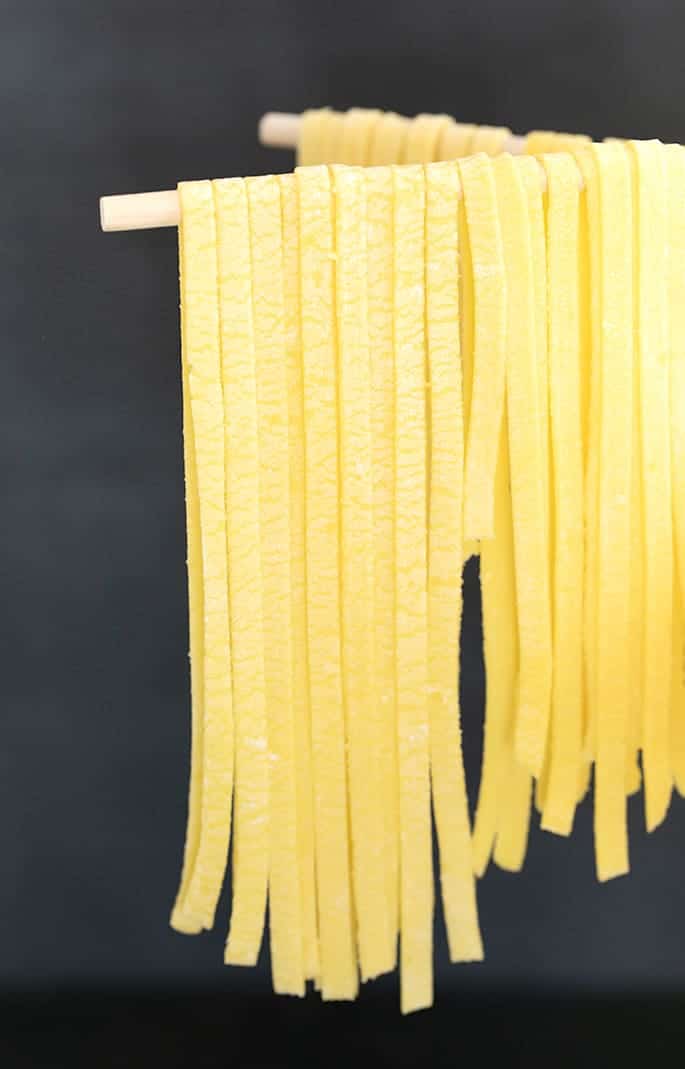
my take
Nicole's Recipe Notes
Most homemade pasta is made with eggs. Gluten free egg noodles are similar to our recipe for classic homemade gluten free pasta—but they're much richer and smoother in taste.
There are so many dried gluten free pastas to buy, and many of them are quite good. But the only brand of dried gluten free egg noodles I've ever seen is Manischewitz, and they're as terrible in taste and texture as they are expensive.
And they're really expensive.
There are even some fresh gluten free pastas that you can buy at stores like Whole Foods—but they're ridiculously expensive. I have picked up a package in the store, considered it, then put it back so. many. times.
If you want good-tasting gluten free egg noodles, you're going to have to make them yourself. It takes a bit of time, but that fresh pot of homemade gluten free chicken noodle soup is going to be an instant family favorite.
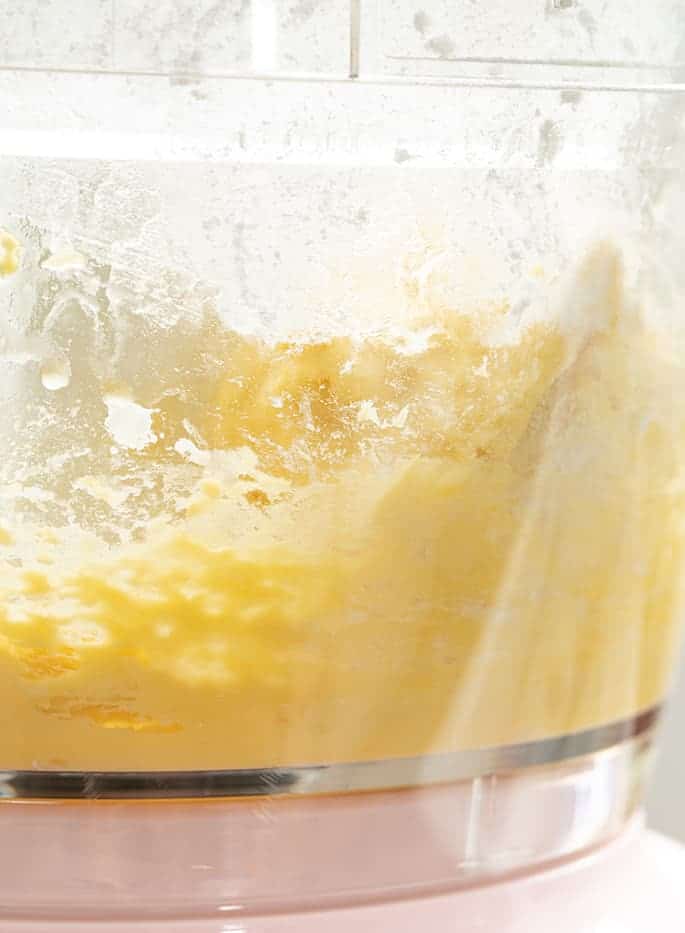
How to make gluten free egg noodles
This recipe for gluten free egg noodles has two steps: making the raw pasta dough, and shaping it into noodles.
Make the raw pasta dough
To make the raw noodle dough, you only need a few ingredients, and a food processor does all the work for you. First, place the all purpose gluten free flour blend (including xanthan gum) and tapioca starch in the food processor, and lock the top in place.
There are 2 eggs and 4 egg yolks in this recipe, and you'll begin by adding the first egg or egg yolk to the flour just to moisten the flour. This way, when you begin to add the remaining eggs and oil, you can keep the food processor running but avoid the dry flours flying all over the place.
Next, with the food processor on low, add all of the remaining the eggs and egg yolks, then olive oil, until the dough clumps and then smooths out. The dough may be kind of sticky, so you'll need to flour it lightly when you take it out of the processor—but this is your pasta dough, and it's already made!
Shape the noodles
Next, we will shape a single mound of pasta dough to turn it into actual noodles. You can do this by rolling and cutting the dough by hand using a rolling pin and pastry cutter/wheel, or you can use a pasta machine if you have. The pasta machine only makes it easier to press the dough into sheets, and then cut those sheets into long, thin noodles. It isn't essential to making these egg noodles at all.
Shape the noodles by hand
To shape the noodles by hand, roll the dough on a lightly floured surface until it's a bit more than 1/8-inch thick. Keep moving the dough as you work, and dust it regularly if it begins to stick. I like to use tapioca starch/flour for shaping here, since it's very lightly, and is less likely to absorb into the pasta dough than an all purpose gluten free flour blend.
Try to roll the dough into a rectangle that's about 4-inches wide x 14-inches long, no longer, or it will become too difficult to handle. Trim jagged edges to make clean noodles, then cut the rectangle into long, flat strips about 1/4-inch wide and 14-inches long. For each 4 inches of width, you should get about 16 noodles. Without a pasta roller, you can't make round spaghetti-style noodles, only flat ones.
Shape the noodles with a pasta roller
To shape the noodles with a pasta roller, you'll still have to begin by rolling the dough on a lightly floured surface with a rolling pin, but only until it's about 1/2-inch thick. Keep the dough moving, and dust it lightly with more flour as you go to prevent it from sticking.
To roll the dough in a pasta machine or roller, you'll feed it through the machine twice with the rollers as far apart as possible (position “0” or “1”). The purpose of this is to press the dough into an even layer before rolling it thinner by turning up the dial one notch. Repeat until you reach the #4 setting on the pasta roller.
To cut the rolled pasta sheets into noodles, dust with more flour, select the roller that cuts into the shape you like, and feed the pasts through the roller to cut it.
Dry the shaped pasta noodles
Whether you've shaped the pasta by hand with a roller and cutter, or by using a roller, you need to dry it before storing it or cooking it. If you attempt to cook it right away, it won't hold together very well.
To dry the noodles, hang them on the spindles of a pasta drying rack, or dust lightly with more flour and roll into “nests” and place on a lightly floured surface.
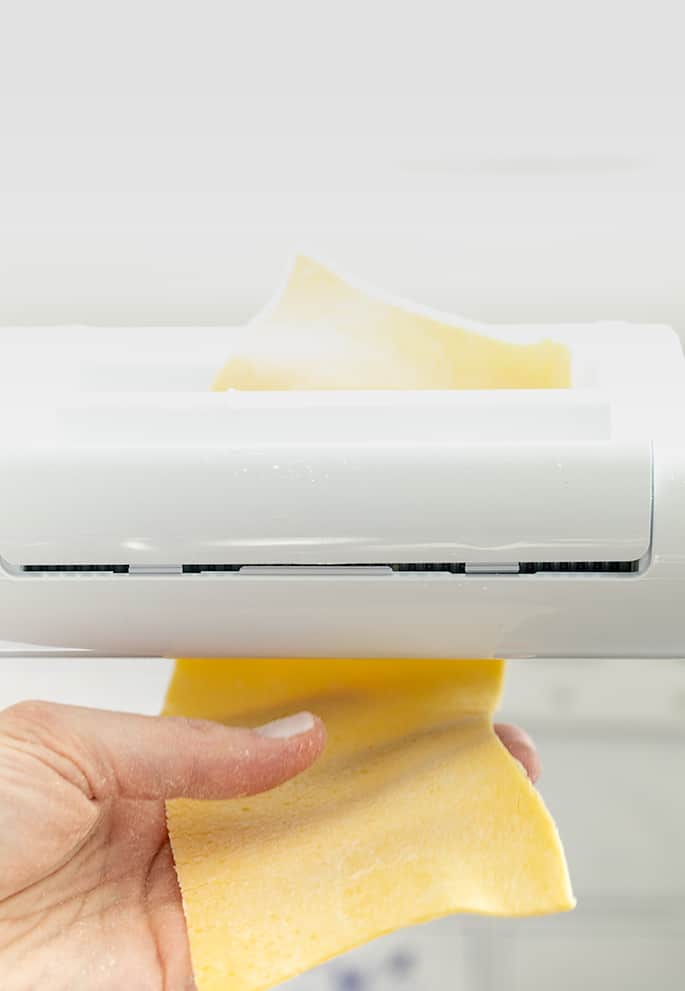
Tips for using a pasta roller to make gluten free pasta
The numbers of your pasta roller machine correspond to the distance between the roller bars. Begin with the lowest number (which may be “0” or may be “1”) for the rollers in the position farthest from one another.
Go step by step, decreasing the distance between the rollers one at a time. Don't skip any numbers.
Dust the dough repeatedly with more tapioca starch/flour as you go. If it begins to feather on the edges, it's likely too wet—or you've rushed the process.
Dust the dough, and go step by step. And then try serving them topped with gluten free Swedish meatballs, and don't skimp on the gravy!

Ingredient substitutions
Choosing your gluten free flours
This is one of those simple, basic recipes that has only a few basic gluten free ingredients: flours, eggs, oil. The gluten free flour blend you use always matters.
Here, the flours matter even more. I highly recommend using Better Batter, or my mock Better Batter blend (just click the link right above for the full recipe).
You can use (mock) Cup4Cup, but you'll have better results with a blend that has the fortitude of (mock) Better Batter.
Either way, you'll need the addition of tapioca starch/flour. It helps provide structure and stretch.
Yes, you still need to add tapioca starch/flour even though your all purpose flour blend contains it as an element. I don't recommend freelancing! Just follow the recipe precisely as written.
If you can't have tapioca starch/flour, then you're unable to use (mock) Better Batter or (mock) Cup4Cup either. And I'm afraid you can't make this particular recipe!

Gluten free egg noodles without eggs?
These are egg noodles. I don't recommend trying to make them without eggs.
I'm working on a recipe for gluten free udon noodles, which won't have eggs. I promise to link to that recipe here when it's available!
If you can have eggs, but you're just wondering about what to do with your leftover egg whites since this recipe calls for additional egg yolks, save them for gluten free angel food cake!
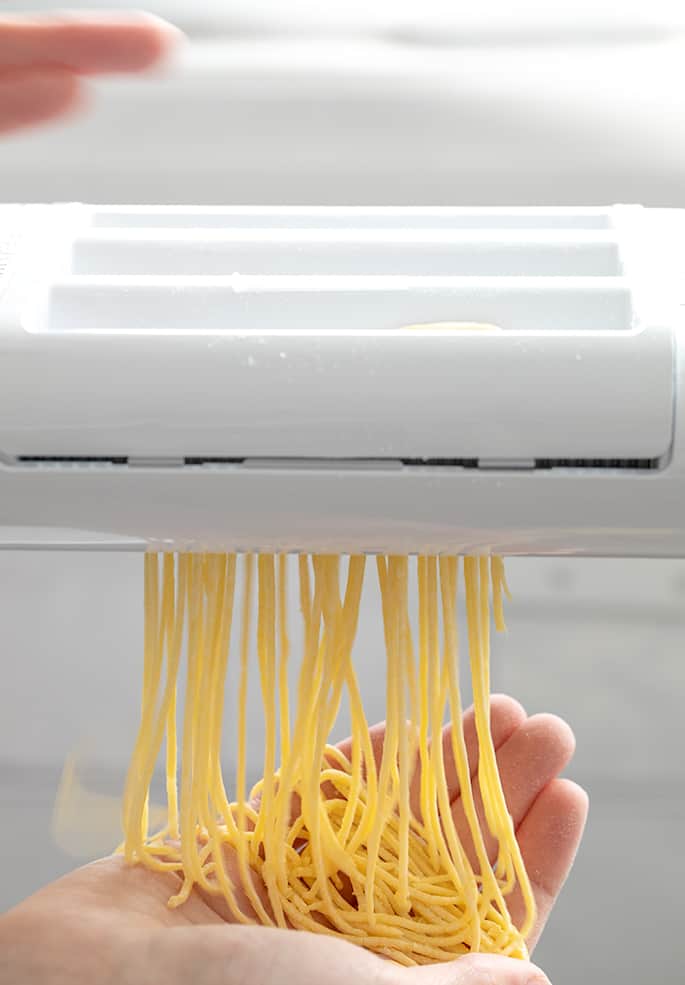
Gluten Free Egg Noodles Recipe

Equipment
- Food processor fitted with steel blade
- Hand crank pasta roller or stand mixer attachment optional
- Pasta drying rack optional
Ingredients
- 1 cup (140 g) all purpose gluten free flour blend, (I used Better Batter, and highly recommend it here; choose your blend carefully)
- ½ teaspoon xanthan gum, omit if your blend already contains it
- 5 tablespoons (40 g) tapioca starch/flour, plus more for sprinkling
- 2 (100 g (weighed out of shell)) eggs, at room temperature
- 4 (100 g) egg yolks, at room temperature
- 1 tablespoon (14 g) extra virgin olive oil
Instructions
To make the pasta dough.
- In the bowl of a food processor fitted with the steel blade, place the flour blend, xanthan gum, and tapioca starch/flour.
- Place the top on the food processor, remove the hopper and add an egg or egg yolk to moisten the flours. Turn the food processor on low and continue adding the eggs and egg yolks slowly.
- With the food processor still working, add the olive oil slowly. The dough will clump to one side of the food processor.
- Continue to process until well-combined. The dough may still be a bit sticky.
- Sprinkle a flat surface lightly with tapioca flour, and transfer the dough to the surface. Divide the dough into 3 equal parts.
- Working with one part at a time, and covering the others with plastic wrap, knead the dough until smooth.
To roll the pasta by hand.
- Roll the dough on the dusted surface into a rectangle that’s a bit more than 1/8-inch thick, dusting liberally with additional tapioca starch to prevent it from sticking to the surface or the rolling pin.
- Move the dough frequently. The rectangle is easiest to handle if it’s no more than 4-inches wide and about 14-inches long.
To cut the pasta by hand.
- Trim any rough edges and cut into strips with a pastry cutter, pizza wheel, or sharp knife. Hang the pasta on the spindles of a pasta drying rack, or dust lightly with more flour and roll into “nests” and place on a lightly floured surface. Repeat with the remaining dough.
To roll the pasta with a pasta machine.
- Roll the dough by hand with a rolling pin into a rectangle about 1/2-inch thick, sprinkling liberally with additional tapioca starch as necessary to prevent sticking to the surface or the rolling pin.
- Dust the rolled-out dough lightly with more tapioca starch, and feed the dough through a pasta machine with the rollers as far apart as possible (position “0” or “1”).
- Feed the pasta through the rollers twice. Turn the dial one notch up, and repeat.
- Repeat the process, turning the dial one notch up each time, until you reach “4.”
- Any time the edges of the pasta sheet begin to feather or otherwise become uneven, dust both sides lightly with more tapioca starch before proceeding. (See Recipe Notes.)
To cut the pasta with a pasta machine.
- Trim the edges of the rectangle, dust lightly with more tapioca starch, and feed through the pasta roller to cut into the ribbons you’ve selected.
- Hang the pasta on the spindles of a pasta drying rack, or dust lightly with more flour and roll into “nests” and place on a lightly floured surface. Repeat with the remaining dough.
To cook the pasta.
- Bring a large pot of salted water to a rolling boil. Place the fresh pasta in the water and cook, stirring to prevent the dough from clumping, for about 2 minutes or until it reaches al-dente texture.
- Toss with some olive oil or sauce, and serve immediately. If using the egg pasta for chicken noodle soup, add to the soup and serve immediately.
Make-ahead instructions.
- If you are using a pasta drying rack, I don’t recommend letting it dry for more than about 1 hour (less if it’s very thin, like angel hair). It becomes brittle and can be difficult to transfer without breaking. I recommend boiling and eating it the same day.
- If you’re coiling your fresh pasta into nests, dust them with extra tapioca starch/flour, and allow them to dry completely (a couple hours). Then, place them in a rigid, freezer-safe container and freeze until ready to use. Boil right from frozen until al-dente.
Video
Notes
Nutrition information is automatically calculated, so should only be used as an approximation.
FAQs
No! Egg noodles are normally made with semonlina flour, which is a wheat-based flour, one of the main sources of gluten. For gluten free egg noodles, you need a recipe like this one, that's made with gluten free flours and other ingredients!
Yes, I believe that you need a food processor to make this recipe for gluten free egg noodles properly. Even a miniature food processor will work (I've tried).
I try to require as little special equipment as possible in my recipes, since I want everyone to join in the fun. But I will say that, if you don't follow the recipe as written, your results are far from guaranteed.
If you don't use a food processor here, your ingredients are unlikely to be combined properly. That means your dough won't be like mine.
No, you absolutely do not need a pasta roller/machine to make homemade pasta of any kind. I like to use a combination of hand rolling and machine rolling. Hand rolling allows me to control the moisture in the egg noodles as I go along.
We begin this recipe with a relatively tacky dough, since gluten free flours tend to absorb more moisture. But if we don't control for the excess moisture, the raw noodles won't hold their shape.
Rolling the pasta in a machine helps me achieve a uniform thickness throughout the dough. And it also makes cutting into ribbons a snap.
No, you don't need a pasta drying rack. They're handy for drying pasta without overlapping it too much. But it is really just as effective to create nests of raw pasta ribbons and allow them to dry a bit that way.
When you boil the pasta, the noodles will separate as long as the ribbons have been dusted with flour—no matter how they dried. When I made classic homemade gluten free pasta recipe, I coiled the cut raw ribbons into nests.
To cook your homemade egg noodles, bring a large pot of salted water to a rolling boil. Place the fresh pasta in the water and cook, stirring to prevent the dough from clumping, for about 2 minutes or until it reaches al-dente texture. Toss with some olive oil or sauce, and serve immediately.


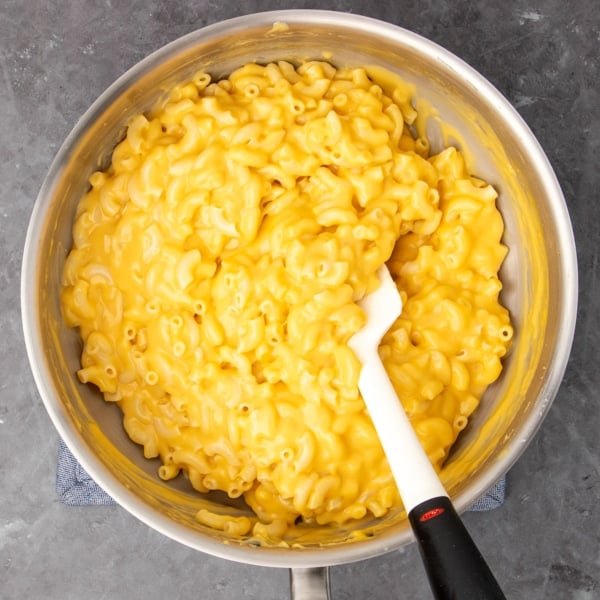
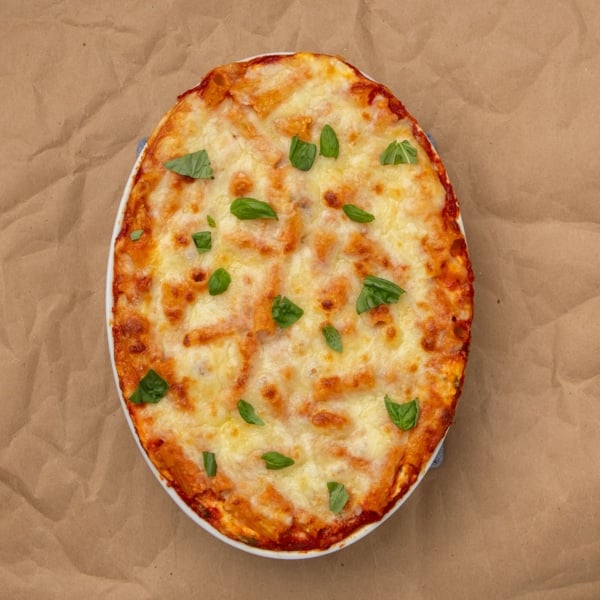
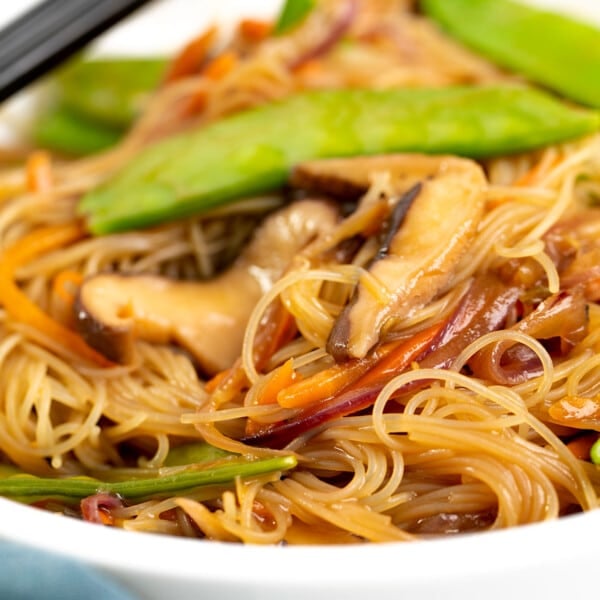
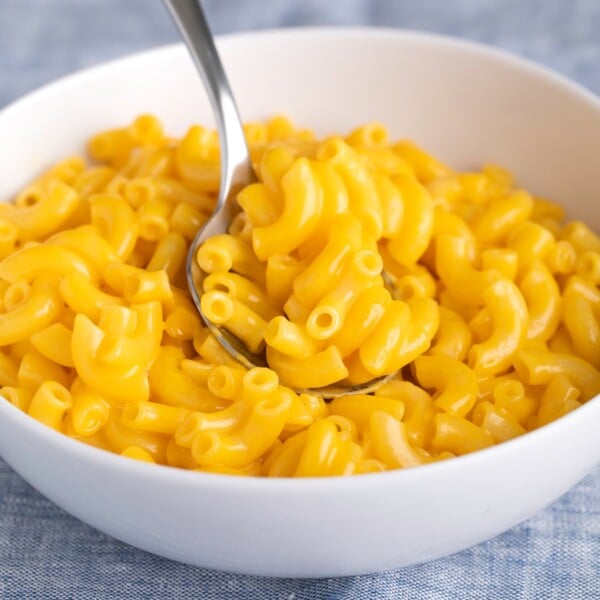









can these noodles be used in a kugel recipe (cooked then baked)? Thank you!
Yes, definitely, Dave. But I wouldn’t boil them first, unless the kugel doesn’t have much moisture.
These were Fantastic!
They were rich with great flavor.
I used what I had available. Nameste GF flour, arrowroot. I followed the mixing directions exactly. They turned out perfectly! I used these with our turkey carcass for soup. My family asked for them again the next day.
I was and still am curious about the recipe not containing salt. Any reasons?
No salt in the pasta only because you boil it in salted water. But you could add 1/4 teaspoon of salt to the dough if you’d prefer, Kim!
I love your recipes! I have used this recipe the most though. This last time I even had a pasta machine, so now I have a freezer full of mushroom ravioli. I wanted to comment to thank you of course for providing such great recipes for free but also to share my flour tip for us European based folks who do not have access to the flour blends you do. I use FioreGlut Farina Senza Glutine by Caputo. It’s an Italian GF flour that’s amazing to work with. I can buy it locally here in Scandinavia but I’m sure it can be ordered online if you are elsewhere in the EU. Anyway much cooking love from Europe.
Hi, Maja, so glad you love the egg noodle pasta, and thank you in general for the kind words about the recipes. Yes, I have tested Caputo’s gluten free flour in a few of my bread recipes successfully. I’m glad to know that it works in pasta, too, which makes sense to me. Thanks for sharing that! I’m not sure that it would work well in more delicate recipes like pancakes and pastry, though.
That is my favourite flour! I’m in Canada and it’s hard to get. But I stock up when I can!
Thank you for all that you do, I want to make pierogies, which we always made with an egg noodle recipe, do you think I would be able to use this dough to make them? Normally, after they are filled, we boiled them for 15 to 20 minutes. Then sautéed onions and butter. I would be very grateful for any answers you can give me thank you.
Connie
Actually, I have a separate recipe for gluten free pierogies, Connie. I recommend using that.
These were sooo good. When I had to quit gluten several years ago, I feared I’d never get to use my pasta maker again. Our relationship is back on! Bonus: just enough whites left over for a meringue shell to fill with fresh berries.
That’s so great to hear, Marcia! Thank you for sharing your experience.
When putting these noodles in chicken and noodles, how are they for those that eat later and how are they for warming up the soup a day or two later?
I have a recipe for gluten free chicken noodle soup, if that’s what you mean, but I’m afraid it’s never a good idea, gluten free or not, to let fresh noodles sit in soup as leftovers. They will always become soggy. I would only cook as many fresh noodles as you intend to eat right away. The rest can be dried and boiled at another time.
Can you use egg substitute for the egg yolk?
No, you can’t. Please see the Ingredients and substitutions section, Kathy.